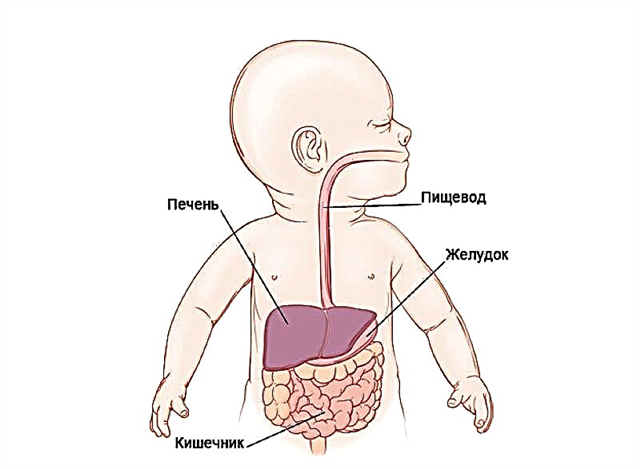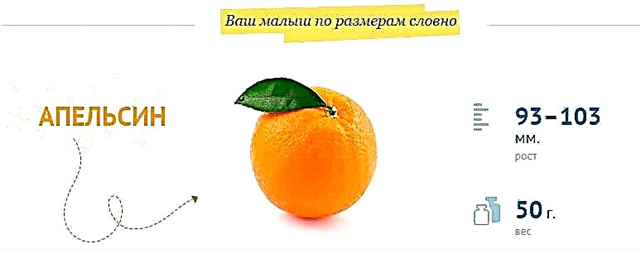
The oxygen value for the human body is great. Without it, existence itself will become impossible. Oxygen is also needed for babies who are still developing in the womb. If, for some reason, the baby receives less oxygen than he needs, if the state of oxygen starvation develops during childbirth, then this can have rather serious long-term consequences for the health of the baby. In this material, we will talk about what is the state of hypoxia in newborns, how it is dangerous and what should be the treatment for the baby.

Features:
Hypoxia in medicine is usually called a state of oxygen deficiency. Various organs and tissues of the child's body can starve because of it. The brain and nervous system are most susceptible to oxygen starvation. During pregnancy, the baby receives oxygen from the mother's blood through the uteroplacental blood flow. During this period, chronic hypoxia may develop if the crumb systematically lacks the necessary substance.

If the pregnancy was completely normal, then no one can guarantee that hypoxia will not appear during childbirth. But then it will be called acute hypoxia.
What happens to a baby if he lacks O2? During the period of intrauterine development, the baby can resist this unfortunate factor for a long time - he calms down, "saves" oxygen, his movements become slower and less frequent. The adrenal cortex stimulates the tiny heart to work more actively. But the compensatory abilities of the fetus are not endless. If the state of hypoxia is long and severe, the death of the baby may occur.

The consequences of intrauterine hypoxia, which is most often discussed when a newborn is given an appropriate medical verdict, can be very diverse. If during pregnancy the baby chronically lacked oxygen, he is usually born with insufficient weight, has low Apgar scores and a lot of problems with the development of the nervous system. The consequences of acute hypoxia, which happened during childbirth, can be even more devastating for the child.

In addition, in medicine, several types of hypoxia are distinguished, which mainly describe its mechanism. So, there are subspecies such as:
- respiratory - oxygen deficiency in a newborn is associated with bronchospasm or pulmonary edema;
- circulating - the organs and tissues of the crumbs experience a lack of oxygen due to disturbances in the work of the heart and blood vessels;
- hemic - shortage based on severe anemia;
- tissue - oxygen deficiency, based on a violation of the process of assimilation of substances by the tissues of organs;
- combined - shortage associated with the simultaneous coincidence of several factors, including intrauterine or childbirth.


Causes
Not a single baby is immune from hypoxia. It is enough to carefully read the common causes of this condition to understand that oxygen deficiency can occur at any stage of pregnancy or childbirth, as well as in the early neonatal period.
So, during the period of carrying a baby, a pregnant woman can hear from an obstetrician-gynecologist who observes her that he suspects signs of hypoxia in the child. This is especially likely under the following circumstances:
- the presence of diabetes mellitus in a woman;
- infectious ailments that a woman has had during the first trimester;
- multiple pregnancy;
- long-term threat of miscarriage;
- placental abruption;
- prolonged pregnancy (childbirth after 42 weeks);
- insufficient level of hemoglobin in the blood of the expectant mother;
- pathology of the placenta, umbilical cord, impaired blood flow between mother and baby;
- smoking, drinking alcohol;
- rhesus conflict.


During childbirth, a state of acute hypoxia may develop, in which the baby will experience a serious shock. This deficit can be caused by:
- impetuous, quick labor;
- a long anhydrous period with premature discharge of amniotic fluid;
- asphyxiation with umbilical cord loops during entanglement, clamping of the umbilical cord loop with impaired blood flow;
- childbirth against the background of polyhydramnios or low water;
- natural childbirth with multiple pregnancies;
- too early placental abruption (before the baby is born);
- weakness of the birth forces.


Early neonatal hypoxia most often develops in premature infants with low body weight, immature lung tissue, and metabolic disorders.
Signs
Fetal hypoxia during pregnancy is diagnosed with great difficulty, because the only way to detect alarming symptoms is by counting fetal movements. If the baby suddenly became more active, his tremors became very frequent, sometimes painful for a woman, with a high degree of probability he is experiencing a state of oxygen starvation. With his movements, he tries to pull at the placenta in order to get a little more of the substance he needs. In a state of prolonged hypoxia, fetal movements, on the contrary, slow down, become rare and sluggish.
Such complaints of a pregnant woman are the basis for an unscheduled ultrasound scan, and with a Doppler, to assess the speed and volume of blood flow in the mother-placenta-fetus system. At the gestational age of 29 weeks of gestation, CTG - cardiotocogram can be performed. But all these methods can only indicate a certain unhappiness of the fetus in the womb, but, alas, they cannot answer the question of whether there is hypoxia for sure.

The state of acute hypoxia is determined during childbirth, if the birth process occurs under the control of CTG. Doctors-neonatologists, examining a baby, note the effect of hypoxia on his condition, and this is reflected in the Apgar score. A baby who has experienced prolonged hypoxia in the womb or experienced it during birth usually does not immediately scream, his skin is cyanotic. Often the child needs the help of resuscitators.

In the early neonatal age, signs of hypoxia are manifested in the restless behavior of the baby and numerous neurological symptoms, which are noticeable not only to the neurologist, but also to the mother, who is completely far from medicine. Such children often and for no apparent reason cry and scream, arch their backs in an arc and at the same time throw back their heads, they experience abundant and frequent regurgitation, sleep and appetite disturbances, tremors of the limbs and chin, nystagmus of the pupils of the eyes can be pronounced.

The exact list of disorders depends on which part of the brain is most affected by oxygen deprivation. A mild form of hypoxia may not cause external symptoms; only an experienced doctor will be able to discern small "malfunctions" and "inconsistencies" in development. Hypoxia of the 2nd degree most often becomes the cause of coronary artery disease, but this does not always pose a danger in the future.
Hypoxia of moderate severity and severe form are dangerous. Violations can be noticed almost immediately. These are various forms of paralysis and paresis, cerebral palsy, encephalopathy, severe damage to the organs of vision, hearing, speech centers and the musculoskeletal system.

Very often, the symptoms of hypoxia are "recorded" by increased muscle tone in a newborn. It is easier for a doctor to explain to mom that tone is a consequence of a lack of oxygen, to prescribe a massage than to tell that tone is a normal phenomenon for all newborns, without exception. However, generalized hypertonicity, covering all muscle groups of the baby, cannot be considered physiological. It may be a consequence of the transferred hypoxia.
To the question of whether hypoxia affects the development of the baby, the answer is always yes. The only question is how great are the posthypoxic changes in the structures of the brain. A slight hypoxia, subject to the doctor's recommendations, may not have a significant effect on the baby. It is difficult to talk about severe hypoxia, which was complicated by oxygen starvation and the subsequent death of brain cells. The consequences will be as large as the loss of cells.


Therapy
If the state of oxygen starvation of the fetus is detected even before delivery, the treatment is carried out by an obstetrician-gynecologist. It includes hospitalization in a hospital, the introduction of drugs that improve blood circulation in the mother-placenta-fetus system, iron preparations are shown to increase the level of hemoglobin, vitamins, magnesium to relieve uterine tone.
If therapy is unsuccessful, a decision is made on early delivery, since further gestation and prolongation of pregnancy are regarded as a dangerous condition for the child's life.

In case of acute hypoxia, which developed during childbirth, the baby is provided with emergency assistance. A resuscitator is invited to the delivery room. The baby is placed in a special resuscitation box, providing constant oxygen access by applying an oxygen mask.
Additionally, drugs are introduced that improve blood circulation, sedatives. Examination of the state of the brain is carried out on the first day after delivery. Further treatment while in the hospital depends on the degree of damage. After hypoxia, the mother and child will not be discharged home, they will be sent to the children's hospital to treat the effects of oxygen starvation.

Recovery after the experience of hypoxia is quite long. Parents need to prepare for this. After hospitalization, treatment will continue at home. The child will be registered with a neurologist. You will need to visit this doctor at least as often as your local pediatrician.
A month-old baby must be examined for ultrasound, neurosonography is performed, then an ultrasound of the brain (through the fontanelles on the head) is done as needed at the age of up to a year. After that, EEG, Echo EG, MRI or CT can be prescribed if a cyst, tumor, or extensive damage to the central nervous system is suspected.

The standard course of treatment includes massage, daily gymnastics, bathing, compulsory walks in the fresh air, physiotherapy. If medication is prescribed, it is the mom's job to make sure that the child receives the medication regularly and at the recommended dosage. For children with post-hypoxic changes, long-term breastfeeding (at least up to a year), hardening and cool baths, compulsory vaccination against common dangerous ailments are recommended according to the National Calendar of Preventive Vaccinations.


In a family where a baby born with signs of hypoxia grows up, there should be a normal psychological climate, this is very important in view of the increased nervous susceptibility of the baby. You should limit visits to guests, relatives, noisy companies, the child definitely needs a sparing day regimen and the absence of stressful situations.
The opinion of Dr. Komarovsky
The well-known pediatrician and TV presenter, author of books on children's health, Yevgeny Komarovsky, is quite often forced to answer parents' questions about the possible consequences of hypoxia suffered by the baby. He believes that the most important role in the treatment of a child is played not by neurologists and pediatricians, not expensive medicines, regular massage and visits to doctors.
Neurologists are often mistaken, the diagnosis is not 100% accurate, and the drugs that are usually prescribed to children after hypoxia, in general, according to Komarovsky, raise great doubts, because the benefits of vitamins and vascular drugs in the process of brain cell restoration are minimal.

The child is cured by the love and care of parents, developmental activities with the participation of a qualified child psychologist, participation in the life of the baby. Without this, the forecasts for the future, says Komarovsky, are very, very unfavorable.
In most cases, with mild to moderate hypoxia, everything does without serious consequences. The main thing is not to panic or rush to extremes. It is the extremes that Komarovsky is considered the most dangerous consequence of oxygen starvation. Neurologists exaggerate the consequences, and sometimes they do overdiagnosis at all - trembling in the chin while sucking pacifiers or increased tone about hypoxia, according to Komarovsky, do not speak. However, parents are persistently prescribed examinations and expensive massage courses, without which the baby in 95% of cases can do without, limiting himself to mother's home massaging without significant financial costs.
Parents, according to Komarovsky, are too trusting and prone to alarmism, and therefore agree to everything - folk methods, osteopaths, chiropractors, voodoo and the ritual of removing spoilage, just to protect the baby from the consequences of oxygen starvation, which are so dangerous and prescribed by the doctor. This approach sometimes harms the child more than hypoxia itself.

Feedback from parents
According to many mothers, doctors really do not skimp on such a diagnosis, as a result, almost every second newborn receives a referral to a neurologist and massage. But mothers are increasingly refusing the drugs that are recommended to be taken to restore the brain and are choosing the approach that Komarovsky also adheres to - they are treated with love, care and adequate care.
The most difficult thing, according to mothers, is to survive a period of complete uncertainty, when no doctor can give any predictions as to whether any consequences of oxygen starvation will manifest. Mothers have to be more attentive, observant and develop analytical skills in order to notice deviations and anomalies in the baby's behavior in time.

Many mothers note that swimming from an early age has a positive effect on the child's condition. Symptoms of neurological disorders quickly disappeared and by the year the neurologist who was observing the child admitted that the situation had changed for the better.
Most parents note that up to 3 years old, children who have undergone hypoxia develop speech more slowly, but by 5-6 years all defects can be corrected. There are no complaints on the forums that a teenager speaks poorly or understands little after hypoxia in childhood.

For the prevention of fetal hypoxia in a pregnant woman, see the following video.



